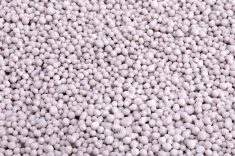Comments by fertilizer executives and others implying farmers are putting world food supplies “at risk” by not buying fertilizer inputs are extremely aggravating to their farm customers (see quotes from Bill Doyle in “As farmers cut back on fertilizer, the impact could reverberate far beyond Potash Corp.’s bottom line,” The Globe & Mail, April 24, 2009).
Two years ago, we at Keystone Agricultural Producers have been very concerned about differential and aggressive pricing of fertilizer inputs in Western Canada. At that time, we had a study conducted by PricewaterhouseCoopers that showed 60 per cent price differentials on fertilizer prices across the U. S. and Canada border.
Read Also

Still hard to predict precise fertilizer payback
Despite decades of advances, international research finds no clear answer for where and when adding nutrient will fail to boost growth.
Then prices started to rise as grain prices went up – this even though fertilizer company inputs did not rise, or did so only moderately. As grain prices peaked and dropped to more moderate levels, fertilizer manufacturers now accustomed to large profits tried to drive prices even further based on fear of tight supplies. During this time they kept telling any farmer or farm organization that offshore demand would drive prices even further.
Try as we might, we could not find these huge demand numbers or even higher prices than we were paying anywhere in the world. What we were seeing was an attempt to use fear to set market prices.
Then the economy softened, farmers had already backed off on purchases at inflated prices, and dozens of dealers were caught with overpriced inventory and were at financial risk. Fertilizer manufacturers tried to cut supplies using layoffs and plant closures to restrict production. Prices still didn’t rise as farmers put off purchases as long as possible.
Now this spring we have more moderate fertilizer pricing (nitrogen and phosphates are more moderate, potash is not) realistic to grain pricing but we have a lot of unhappy people: farmers who paid too much in 2008, dealers stuck with high-priced inventory, unions who had laid-off workers, and shareholders of fertilizer companies whose shares have taken a dramatic hit on prices.
We now see farm income numbers for 2008 that are disappointing to say the least. According to Statistics Canada, Manitoba’s realized net farm income last year was $232 million, which is down from $335 million in 2007. This was largely driven by the overpriced inputs from the same year.
When you make everyone irritated, use fear as a market tool, and dip into farmers’ pockets in a big way, is it any wonder input purchasers have been very cautious? It makes you wonder how big the bonuses have to be to get your customers this angry.
Ian Wishart is president of Keystone Agricultural
Producers. He farms near Portage la Prairie.













